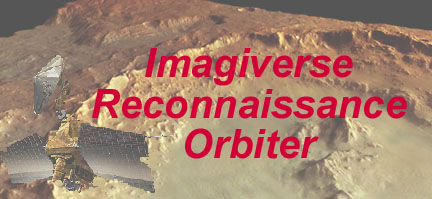

The History of Mars
One way scientists determine the age of the surface of a planet like Mars is by counting the number of impact craters. An area with many craters is older than a smooth surface that may be covered by moving sands, modified by erosion, or covered in the past by liquid. Mars history is described by three eras: Noachian, Hesperian and Amazonian.
The Noachian Period
The oldest regions of Mars are the southern highlands. This region is about 4,500 MY (Mars years) to 3,900 MY old. It is covered with craters of all different sizes. The largest of these craters is the Hellas Basin. Most of the United States that lies east of the Mississippi could fit within this crater which is 1,800 km (1,100 miles) across. The Hellas Basin is also the lowest area on the planet. It is about 8.2 km (27,000 feet below the surrounding area).
The region called Arabia is covered with craters. Many of these craters are as large as 10 km in diameter. Some craters overlap. This area is north of the equator and east of the Viking 1 and Pathfinder landing sites.
South of Arabia is the area called Terra Meridiani. This became a place of interest when the TES instrument aboard Mars Global Surveyor discovered the mineral called hematite. This is where the Mars rover Opportunity landed. Opportunity has gone on to confirm the existence of hematite (so far only detected in three locations all in this same general area). Opportunity surprised scientists when it also discovered an iron and nickel meteorite.
Hesperian Mars
This region has a variety of interesting geological features including river channels, volcanoes, smooth plains, and scattered impact craters.
Utopia Planitia was the location of the Viking 2 lander. Utopia got its name from the title of the 16th century book written by Thomas More about an imaginary perfect society. The word "utopia" has its roots in Greek, meaning "nowhere".
Ares Vallis is one of the large "river beds" on Mars. Its name comes from the Greek word for Mars: Ares. Scientists still have not determined if rivers on Mars flowed for long periods of time or if they were one time "catastrophic" events.
Aram Chaos has craters that are thought to have filled with sediments and trapped liquid. The craters show signs of collapsing attributed to melting of the frozen liquid. Water likely broke through the side of the Aram Chaos crater creating the riverbed known as Ares Vallis.
Amazonian Mars
Amazonian Mars is the Mars we are discovering today. Present-day Mars and its recent past hold secrets that are unfolding on a daily basis. There are many interesting features on Mars, most have only been observed from orbit. The size of the mountains, the volcanoes and the canyons on the Red Planet dwarf the same features on Earth.
There are many interesting features on Mars. Students of the Montessori School of Corona (MSOC) did a little investigation on their own and reported back about:
Tharsis
Gullies
| Home | Contact Us | Credits | Sitemap |
© 2005-2008 - Imagiverse Educational Consortium